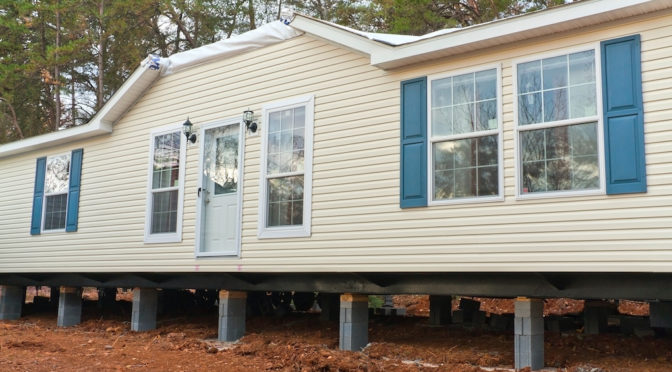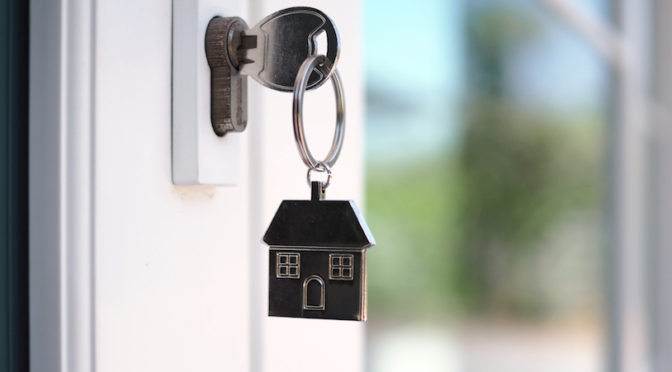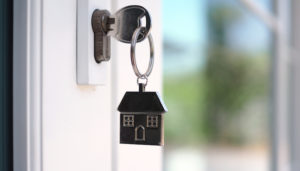5 Reasons We Know Your Home is Sturdy
 Finding a home that can be trusted to keep you and your family safe is a top priority. Manufactured homes are quickly growing as an affordable housing option, but sometimes concerns still arise about the strength and stability of these homes compared with a site-built home. Worry not – Today’s manufactured homes are just as strong and sturdy as any site-built home, and may even be more durable against extreme weather like tornadoes and hurricanes. We’ve explained five reasons why we know your current (or future) manufactured home is ready for anything, so you can stop worrying and start searching for the home of your dreams.
Finding a home that can be trusted to keep you and your family safe is a top priority. Manufactured homes are quickly growing as an affordable housing option, but sometimes concerns still arise about the strength and stability of these homes compared with a site-built home. Worry not – Today’s manufactured homes are just as strong and sturdy as any site-built home, and may even be more durable against extreme weather like tornadoes and hurricanes. We’ve explained five reasons why we know your current (or future) manufactured home is ready for anything, so you can stop worrying and start searching for the home of your dreams.
1. Manufactured homes are built with more materials than site-built homes.
Manufactured homes are intentionally constructed with 20 to 30 percent more materials than site-built homes.1These homes need to withstand the stresses of transportation from the factory to the intended lot or property, so they are built for maximum durability from start to finish. The common myth is that manufactured homes are weaker or flimsier than site-built homes, but the reality is just the opposite. The extra materials used in the construction of the structure provide additional support to the manufactured home, even in the strongest weather conditions. This building technique makes each factory-built home a strong and resilient structure.
2. Manufacturing facilities enforce strict building standards and inspections.
Construction is closely monitored for all manufactured homes. All homes built after the year 1976 must adhere to a set of strict building standards specifically developed for manufactured homes by the U.S. Department of Housing and Urban Development. The HUD Code sets regulations that all manufacturers must abide by, with stringent rules that address building safety and construction processes. HUD standards provide rules and regulations for everything from plumbing, electrical, and fire safety to inspection, testing, and proper installation.
Safety inspections to confirm quality and stability are conducted regularly in manufacturing facilities. These inspections are not just conducted by the facility themselves, but also by third-party inspectors that are trained to detect any problems or violations to address them right away. As building nears completion, many different tests are completed to ensure that all plumbing, electrical, and air systems are working correctly. Rigorous weather tests are also completed to make sure the home can withstand hurricane and tornado level winds. Once the home is confirmed to be code-compliant by the manufacturer, and again by third-party inspectors, it is awarded a permanent certification seal to represent the high standard of quality.
3. Manufactured homes are built in a controlled environment.
Building a home in a manufacturing facility has several advantages when it comes to constructing strong, reliable housing. Building materials such as wood and metal are stored safely inside, unlike site-built homes where materials are exposed to the elements. Exposure to elements like rain and moisture during the building process can lead to warping, corroding, and other effects on building materials. With indoor storage space the materials can also be purchased in bulk for a lower price and saved until needed, meaning that building costs can be lowered and so can the retail price of the home.
The controlled environment of the manufacturing facility benefits more than just the building materials of your home. A stable environment with no wind and with level ground allows for more precision in the construction of the home structure. Beams can be aligned more accurately and walls can be joined at perfect angles, which makes your home as solid and sturdy as is physically possible. Manufactured home facilities also have access to state of the art tools and technologies that aren’t easily accessible at outdoor construction sites. These tools ensure quality construction, but they also provide opportunities for innovation in home resilience. Manufacturers are constantly discovering new ways to strengthen and enhance the construction of their manufactured homes.
4. Factory-built homes are rigorously tested for wind and extreme weather.
Every single manufactured home is rigorously tested at the end of construction to make sure it meets HUD code federal requirements for roof load, wind resistance, thermal efficiency, safety and durability. The home also has to meet regional standards for wind, tornado, and hurricane resistance, which are determined by the area of the intended property. In the early 1990’s the HUD revised their building code to improve the wind resistance of manufactured homes in areas prone to hurricane-force winds. This means all manufactured homes built for these zones today are certified to withstand these extreme weather conditions.
A study completed in 2004 during the Florida hurricane season showed that not a single manufactured home built after 1994 was destroyed by hurricane-force winds.2 In 2017, when Florida experienced hurricane Irma, the majority of manufactured homes were in a similar condition to site-built homes – battered but intact. The manufactured homes of today stand strong through any weather, thanks largely to the rigorous construction standards and review processes in place throughout the industry.
5. Cost savings come from smart buying, not from cheap materials.
Another common myth about manufactured homes is that they are cheaper to buy because they are made with cheaper materials than a site-built home. The lower costs of a manufactured home are made possible in a number of ways, but the cheaper cost of building a factory home is made possible by buying smarter, not by buying lower-quality materials. Manufacturing facilities buy their materials such as wood, metal, and glass in bulk, since they have plenty of space for indoor storage. These building materials are much cheaper to purchase in large quantities, but on-site builders have to worry about materials being damaged in the elements, or about having extra materials left over that go to waste.
Manufactured home factories can safely store and use every bit of their materials, making them more cost-effective and more environmentally friendly. The ability to reuse and recycle efficiently, unlike site-built homes, contributes to the green build approach that manufactured housing construction has adopted. Manufacturers can also buy in bulk for other items that are traditionally expensive for home builders, such as appliances and other home system components. These efficiencies are what lead to the lower cost of manufactured homes, not a lack of quality in the design, materials or construction. Homes can be built for maximum safety and stability, while still being affordable for manufacturers and home-buyers alike.
Making a Better Name for Manufactured Housing
Stereotypes and movies can give manufactured homes a bad name, portraying them as weak, unstable housing that can blow away in an instant. The myths and misconceptions around manufactured homes have officially been busted, and we know now that today’s factory-built homes are strong, sturdy structures that make for a safe, comfortable lifestyle. Using new precise technologies, a controlled environment, and unbeatable cost savings, manufactured homes are built to meet and exceed the strict strength and stability standards that keep your family safe.



